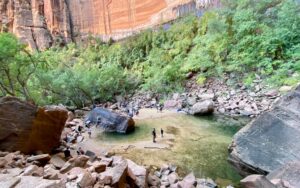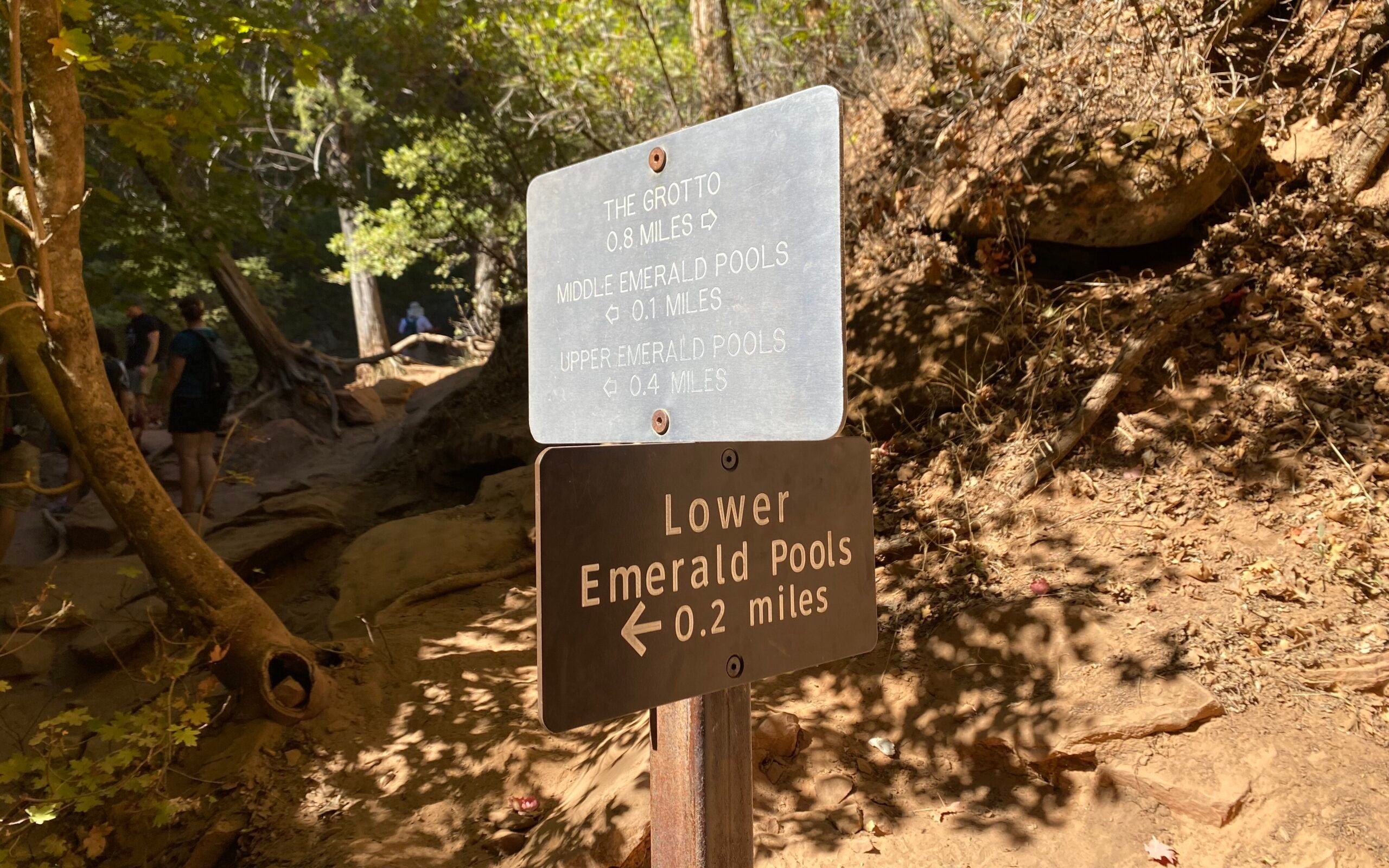Zion National Park is one of Utah’s most breathtaking natural landmarks, drawing millions of visitors each year. But beyond the towering sandstone cliffs and lush valleys, there is a lesser-known wonder waiting to be discovered: the Zion National Park caves. These hidden caves are a gateway into an underground world where history, geology, and adventure collide. Exploring these caves offers a unique perspective on the park’s ancient landscapes.
Introduction to Zion National Park Caves
Zion National Park caves remain an untapped treasure for many visitors. While the park is famous for its scenic hikes and towering canyons, its caves provide a quieter, more intimate experience with nature. These natural formations, carved out over millions of years, hide within Zion’s dramatic cliffs and red rock landscapes. For those willing to venture off the beaten path, the caves offer an exciting opportunity for exploration.

Emerald Pools are another prominent feature of Zion National Park. There are three Emerald Pools — Upper, Middle, and Lower. Visitors can choose from trails to explore these pools, with a 1.2-mile round-trip to the Lower Pool, a 2-mile hike to both the Middle and Lower Pools, or a 2.5-mile hike to all three. Although the pools are scenic, swimming is not permitted. The hike to the lower pools is easy, but the upper pool hike is more strenuous, especially in the summer heat.
The Formation of Zion National Park Caves
The stunning caves of Zion National Park didn’t form overnight. Instead, they are the result of millennia of geological processes. The mighty Virgin River played a significant role in shaping the landscape. Erosion from water and wind gradually wore away the sandstone, carving out caves and slot canyons. Over time, these natural forces created intricate cave systems that now lie hidden beneath the surface.
Sandstone, the predominant rock in Zion, is highly porous. This feature allowed water to slowly penetrate the stone, expanding and deepening cracks, eventually leading to the creation of Zion’s magnificent caves. The result is a collection of underground wonders, each telling a unique story of the park’s geological history.
Types of Caves in Zion National Park
Zion National Park caves come in a variety of shapes and sizes. Some are slot caves, narrow and winding, while others are open caverns with wide chambers. The Red Caves are among the most well-known formations in the park. Their striking red and orange hues make them a sight to behold, especially during the early morning or late afternoon when the sun enhances their colors.
Sandstone caves are a particular highlight of Zion. Unlike the limestone caves found in other regions, Zion’s sandstone caves are fragile and often feature narrow passageways. These caves can be difficult to access, adding to the thrill of the adventure.
Zion has two stunning caves called the Upper and Lower Red Caves. These are slot canyons just east of Mount Carmel. They are also sometimes referred to as Sand Wash or simply the Red Caves. These narrow canyons are a popular choice for adventurers and offer a different type of cave experience compared to other sites in Zion National Park.
Exploring the Red Caves in Zion National Park
The Red Caves of Zion National Park are a popular destination for adventurers. These caves are named for their distinctive red rock, a characteristic feature of Zion’s landscape. The Red Caves offer a different type of exploration compared to Zion’s more famous hiking trails. Visitors can expect to navigate through tight spaces and winding corridors. The experience can feel almost otherworldly as you immerse yourself in the cool, dim atmosphere of the caves.
Getting to the Red Caves often requires a bit of a hike. The trails leading to the caves are scenic and provide stunning views of the park. It’s important to be cautious while exploring these caves, as the terrain can be uneven, and some of the passageways are narrow.
Moqui Cave and Sand Caves: A Glimpse into Zion’s Past

Moqui Cave, one of the most famous Zion National Park caves, doubles as both a natural wonder and a museum. Located just outside the park’s borders, it houses ancient artifacts and offers a window into the region’s rich history. The cave was once a shelter for Native Americans and has since become a museum showcasing artifacts and fossils. Visitors can explore the cave while learning about the people who lived in the region thousands of years ago.
The Sand Caves, located near the Moqui Cave, are another must-see. These caves are unique due to their smooth, sandy texture. Formed by wind and time, the Sand Caves provide a visually striking experience, with their soft walls and golden glow.
Top Caves to Explore in Zion National Park
Aside from the well-known Moqui Cave and Red Caves, there are other hidden gems within Zion National Park. Many of these caves are lesser-known but equally fascinating. Some of the best-hidden caves are located off the main trails and require more effort to find. For adventurers looking to go off the beaten path, these caves provide a sense of solitude and discovery.
Adventure seekers will appreciate the challenge of finding these hidden treasures. Many of these caves are difficult to reach, but the reward is a peaceful, untouched environment away from the park’s crowds. Families and less experienced hikers can enjoy the more accessible caves, which offer a taste of Zion’s underground wonders without the difficulty of long hikes.
Wildlife and Ecosystems in Zion National Park Caves
The Zion National Park caves are not just geological wonders; they also support unique ecosystems. The cool, damp conditions inside many of these caves provide a habitat for species that can’t survive in the hot, dry conditions above ground. Insects, bats, and small mammals often take refuge in the caves, creating micro-ecosystems that thrive in the darkness.
Protecting these ecosystems is crucial. Visitors are encouraged to respect the wildlife they encounter and to avoid disturbing these delicate environments. The caves also play a role in the park’s overall ecosystem, providing shelter and maintaining the balance of life within the park.
The Spiritual and Cultural Significance of Zion National Park Caves
Zion National Park caves have been important to the indigenous people who lived in the region long before it became a national park. The Native American tribes, particularly the Southern Paiute, considered many of Zion’s caves sacred. These caves were used for shelter, ceremonies, and as places of reverence.
Ancient legends tell of spirits residing in these caves, and even today, the caves are seen as spiritually significant. Visitors can appreciate the deep connection between the land and its original inhabitants by respecting the cultural significance of the caves.
Cave Photography Tips in Zion National Park
Capturing the beauty of Zion National Park caves on camera can be challenging. The low light and narrow spaces make photography tricky, but with the right tips, it’s possible to capture stunning images. Bring a tripod to stabilize your shots in low light. A wide-angle lens is helpful for photographing the interior of caves, especially in tight spaces. Timing your visit during early morning or late afternoon can also provide the best natural lighting.
Guided Cave Tours in Zion National Park
For those looking to explore Zion National Park caves with expert guidance, several companies offer guided tours. These tours provide not only access to hard-to-reach caves but also in-depth knowledge about the park’s geology and history. Guided tours are ideal for visitors who want a more structured experience and ensure safety while navigating the caves.
Tour guides often share fascinating facts about the caves’ formation, the surrounding landscape, and the wildlife that calls these caves home. Choosing a guided tour can enhance your appreciation of Zion’s underground wonders.
How to Safely Explore Zion National Park Caves
Safety is a top priority when exploring Zion Park caves. Caves can be unpredictable, and it’s important to come prepared. Always carry a flashlight or headlamp when entering caves, as natural light may not reach the depths. Wear sturdy shoes to protect your feet from sharp rocks and uneven surfaces.
Navigating caves can be disorienting, so it’s wise to explore with a companion. Inform someone of your plans before venturing into remote areas. It’s also crucial to respect the environment by not touching delicate formations or leaving any trace of your visit behind.
Cave Etiquette in Zion National Park
Respect for the caves and the park is essential. Cave environments are fragile, and even a small disturbance can have a long-lasting impact. Visitors should practice Leave No Trace principles, meaning everything brought into the caves must be taken out, and nothing should be altered.
Best Times to Visit Zion National Park Caves
Timing your visit to Zion National Park caves can make all the difference. The park experiences a variety of climates throughout the year, and these can impact cave accessibility. The spring and fall offer ideal conditions for cave exploration. During these months, temperatures are mild, and the crowds are thinner. Summer can be too hot for long hikes, and winter conditions may make some trails treacherous.
How to Reach the Caves in Zion National Park
Many of the best Zion Park caves are located off the main hiking trails. To reach them, you’ll need to venture away from the more popular routes. The Narrows and Angels Landing are great starting points for finding hidden caves. It’s also a good idea to bring a detailed map or GPS to navigate the lesser-known trails.
Why Zion National Park Caves Should Be on Your Bucket List
Exploring Zion National Park caves is an experience like no other. The combination of adventure, history, and natural beauty makes these caves a must-visit for any outdoor enthusiast. The caves offer a unique way to connect with the park, providing an escape from the bustling trails and a chance to immerse yourself in Zion’s rich natural and cultural history.
For those seeking more than just a typical hike, Zion’s caves provide an unforgettable journey into the heart of the park’s hidden wonders.
Discover About:
